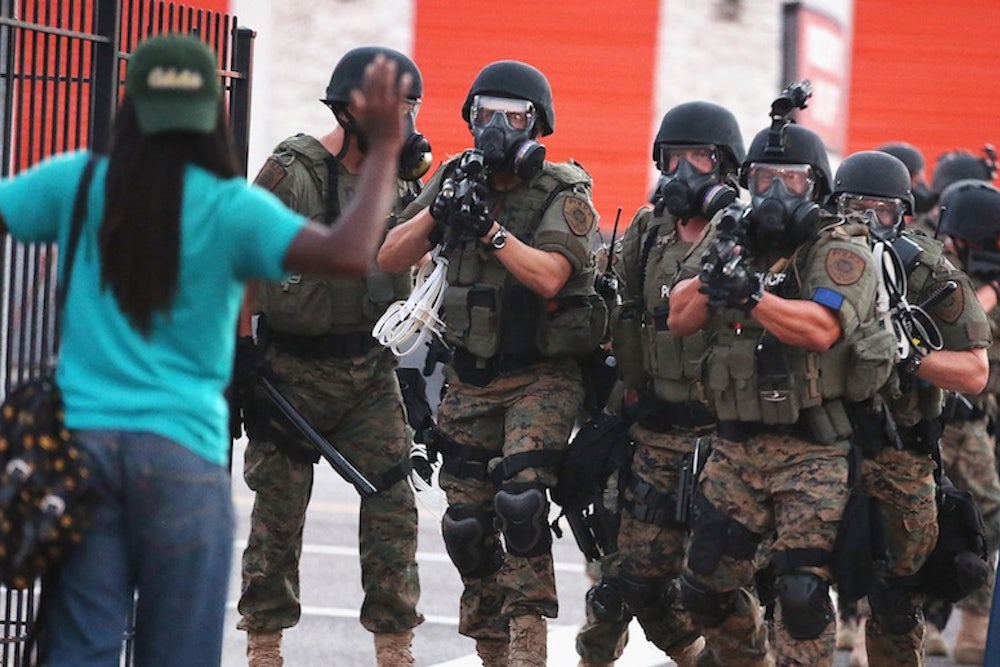The Ferguson, Missouri police department has faced criticism for its response to an officer shooting dead 18-year-old Michael Brown—its riot gear, how it has protected the officer’s identity, and that it reportedly neglected a key witness to Brown’s death. And many of these critics, including Vox, Mother Jones, and the editorial board of the New York Times, have pointed out the lack of racial diversity of Ferguson’s police force: Ferguson’s population is 67 percent black, but African Americans make up just 5.6 percent of the police force. Consider this number in the context of St. Louis’ deeply segregationist and discriminatory history—today, the city is still the sixth-most segregated in the country.

University of Virginia Weldon Cooper Center for Public Service

DOJ Bureau of Justice Statistics
The police forces in large cities tend to be the most diverse, reflecting their populations—cities of one million or more average police forces that are 56 percent white, and 17.6 percent black. Generally, police forces get less diverse as you move down in population size.
Of course, these are just averages and they do not take into account the diversity of the cities themselves. Research also suggests, though, that representation makes a difference in how a community views and trusts police. For example, a 2011 study from the Department of Justice found that a driver stopped by an officer of the same race was more likely to think the reason was legitimate than a driver stopped by an officer who looked different (83 percent vs. 74 percent viewing the stop as legitimate). In Ferguson, blacks are stopped 86 percent of the time and searched 92 percent, though few are found with contraband.
Diversity of officers is not the answer to all of the problems in the law enforcement system, Nusrat J. Choudhury, an attorney with the ACLU’s Racial Justice Program, told me. The New York Police Department is the most diverse force in the country, but a judge found its Stop and Frisk program violated people of color’s civil rights. The disparity in New York’s Stop and Frisk program look a lot like Ferguson’s issues—83 percent of the stops targeted minorities who made up half of the city’ population. And 90 percent of the people stopped were innocent.
